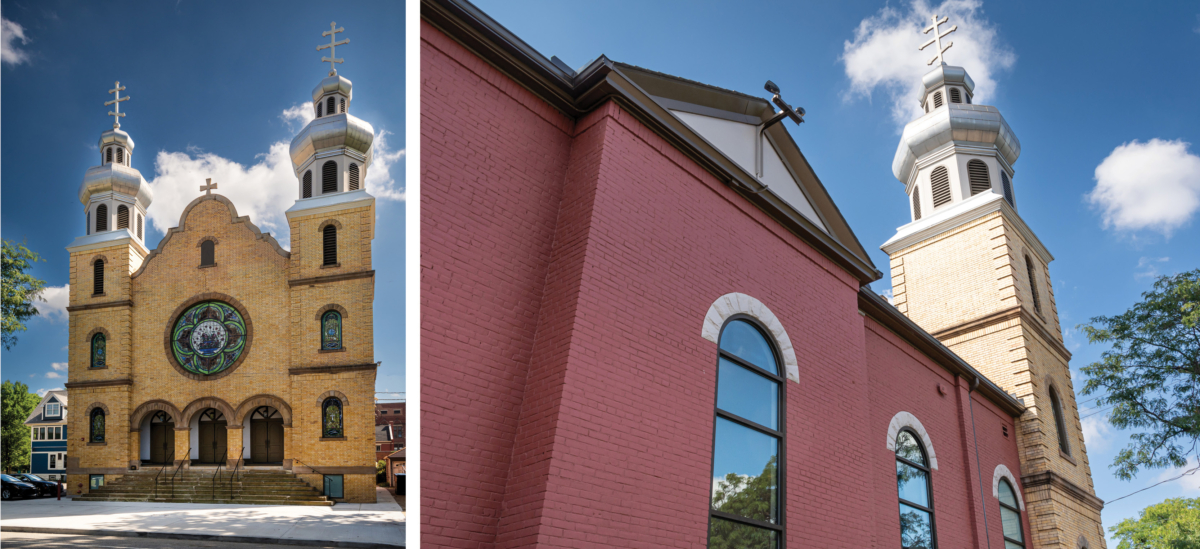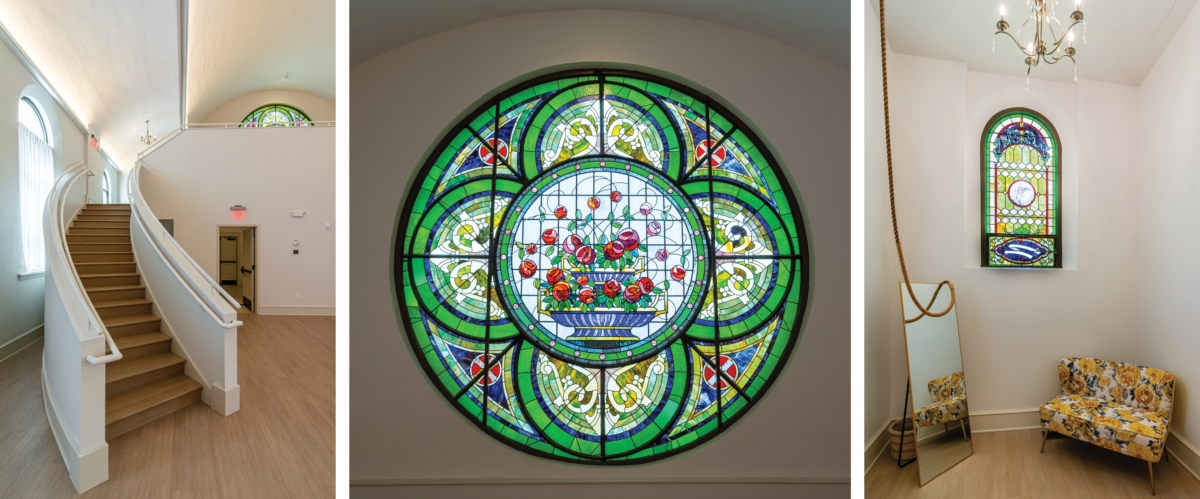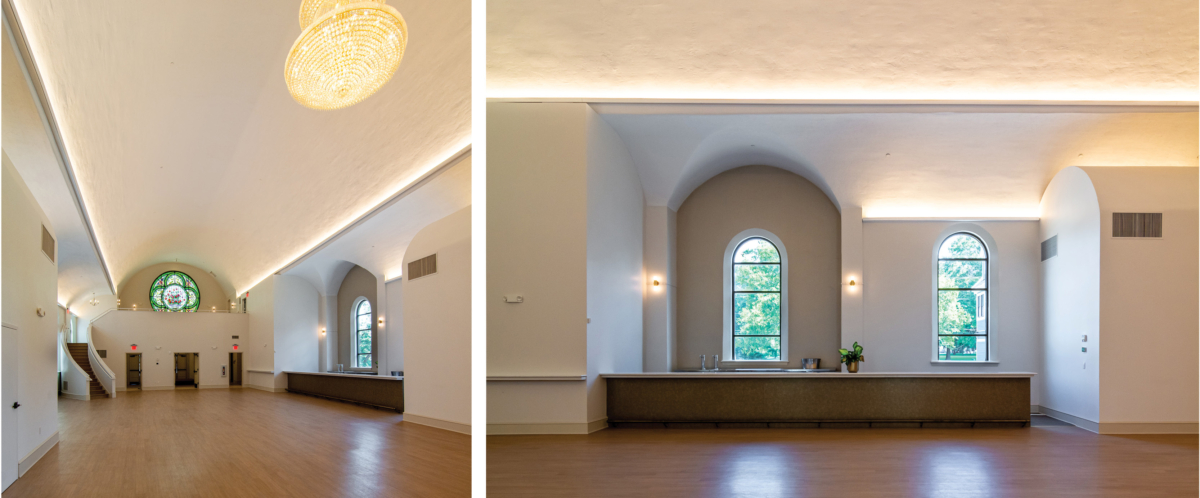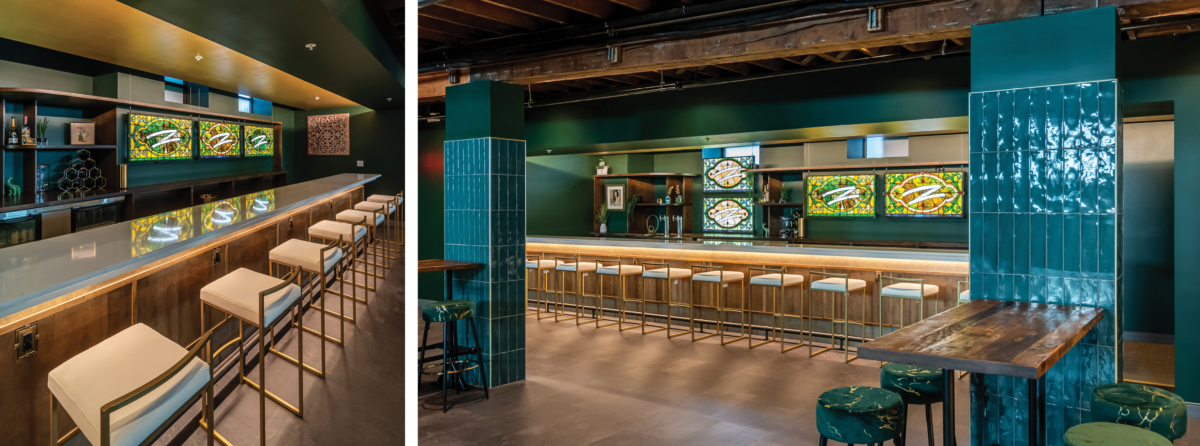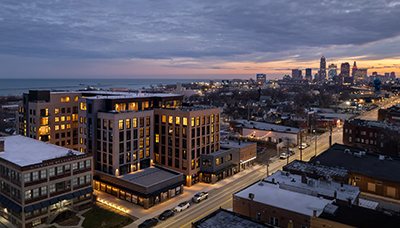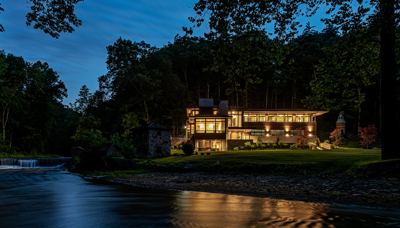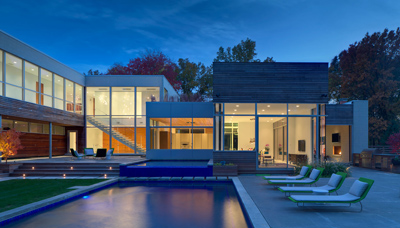Something old, something new
Historic property reopens as full-service events center
Originally published in Properties Magazine, October 2022. Story by Dan Holland
In 2020, Tremont resident Stephanie Ridgely, who had worked for a number of years in the wedding and events planning industry, had a dream of opening and running her own events venue within five years. Her then-fiancée, now spouse, Tim Ridgely, who has extensive experience in the technology and real estate fields, discovered that the former Holy Ghost Byzantine Catholic Church, located at 1415 Kenilworth Ave., was available for purchase.
“We found this building within one week, as we live right down the street,” explains Stephanie. “We then we signed a letter of intent, and after six months of negotiating, we bought it.”
In August, the Ridgelys hosted the grand gala opening of The Elliot in the renovated 112-year-old church building, situated in the heart of the Tremont Historic District. The 10,000 square-foot building sat vacant for seven years prior. Total cost of the purchase, renovations and overhead amounted to approximately $2.6 million.
Nyman Construction, of Cleveland, was brought on board for the renovation project, with demolition work beginning in summer 2021. Full construction work commenced in December with substantial completion in August 2022.
Dimit Architects, of Lakewood, was hired as the architectural/design team in February 2021.
Hometown pride
Tim Ridgely, who has been involved in real estate projects around the country, expressed a desire to reinvest in his hometown community.
“This was a bit of a passion project for me just from a financial standpoint,” he explains. “I wanted to keep the money in our backyard and take a building that really needed some love, and turn it into something cool.”
“It was also a passion project for us,” adds Paul Glowacki, principal architect at Dimit Architects. “The owners believe in the city of Cleveland, and we’re really passionate about doing projects here. We loved working on this project in the heart of Tremont and getting to peel into the history of this magnificent building.”
Exteriors
The building’s yellow-brick front façade was cleaned and tuck pointed. Three original front entry doors, which sit above the original sandstone slab steps, were reconditioned and fitted with new hardware. New exterior LED lighting was also installed.
The 14-foot diameter stained-glass rose window above the front entry doors consists of both restored original glass and a custom-made centerpiece. The new seven-foot diameter center, designed and fabricated by Whitney Stained Glass, contains 800 hand-cut pieces.
The original metal-domed bell towers at the front corners of the building were also restored.
Interior layout
The main doors open into a newly-built lobby, which includes a pair of restrooms, coat closet and access to the main stairwell and an enclosed accessible lift.
The lobby leads into the grand ballroom, which offers a wide-open floor plan that can accommodate up to 200. A lighted eight-foot-high Swarovski crystal chandelier, suspended from the restored barrel-vaulted ceiling, acts as the centerpiece of the space. To the left sits a 27-foot-long quartz-top full service wet bar.
A curved grand staircase leads to the balcony/mezzanine area located directly above the lobby with the rose window as its focal point. A pair of bridal suites sit in each corner within the original bell towers, which maintain the original stained-glass windows. A unique feature is a rope in the bridal suites that can operate the restored bells above.
Two new stairwells were constructed along the east wall: the main stairwell, which accesses all three levels, and a secondary stairwell that accesses the main level and lower level and also provides a secondary egress to the outside.
A pair of large, arched “boxes” were built along the side walls of the ballroom to conceal the secondary stairwell, hide HVAC equipment and also provide storage space. New energy-efficient storefront windows replace the original stained-glass windows along the sides of the building.
The Rosehip Room, which exudes a nightclub/speakeasy décor with an exposed ceiling and modern industrial-style furnishings, sits in the lower level with space for up to 150. The room features an 27-foot quartz bar similar to the ballroom above with the added feature of several original stained-glass windows inset in the shelving. A built-in curved stage, original to the space, can host a variety of live entertainment events.
“The main use for this space is, if you have a wedding upstairs, you can come down here for cocktail hour and then go back upstairs for a reception,” explains Stephanie.
The lower level also includes a pair of restrooms, a utility/fire room and a kitchen/prep space equipped with coolers, heaters, a sink and an ice machine. Three outside catering companies are contracted with the facility to provide food service for events, while the Elliot has its own liquor license to provide bar service.
Flooring throughout the building consists of LVT, ceramic tile in restrooms and carpet tile in the stairwells.
Maintaining historical aspects
Many of the design decisions were rooted in maintaining the historical nature of the property while upgrading it with modern amenities.
“Much on [the owner’s] part, there was a desire to keep the historic fabric of the building, which they really didn’t have to do, as it is not a Historic Register listed building,” explains Glowacki. “Part of that was working with the City of Cleveland Landmarks Commission, and having those discussions of what was important to them, and trying to find that right line of creating a building that was a historic renovation that was also going to be able to work in its new lifecycle for Stephanie and Tim.”
Building systems
Seven residential-grade furnaces were installed around the facility with great efforts taken to conceal the units from sight.
“We hid the HVAC systems in areas like the stairwells; everything just crammed and tucked into spots,” explains Mike Nyman, president of Nyman Construction. “We installed seven furnaces in all in a split system. It had to be properly planned to maximize the space and still get proper air circulation.”
“We did not want to have exposed ductwork,” adds Magdalina Bruder Young, senior architect for Dimit Architects. “The last thing you would want in that barrel vault is ductwork running through the middle of it, or in the lower level with limited head height.”
The structure consists of load-bearing masonry with a wood frame. Eight support columns in the lower level consist of steel supports surrounded by wood bracing. Steel framing was also added in the lobby/mezzanine area. The roof consists of a synthetic slate product.
The building was equipped with all new plumbing and a fire sprinkler system.
Design Considerations
Converting a former religious space into a secular gathering place with a minimalist approach required planning, according to Young.
“The challenge of this project was that it had been a very ornate, religious space,” she explains. “To convert it into a secular event space, all of that ornamentation was stripped away with the exception of a few stained-glass windows so that we were left with a blank canvas. We looked at the primary architectural features on the main level, which is primarily the big barrel vault. So we feel the money spent to preserve that feature was well spent.”
“Creating a blank canvas for any type of event while also maintaining some character was important,” Young continues. “The way we accomplished that was by keeping the interior palette very subdued but really focusing on the geometries and statement pieces like the chandelier. Downstairs, we wanted high contrast, where you feel like you’re in a completely different space where and the environment is much darker and moodier.”
A decision was also made to avoid an industrial design look, Tim explains.
“It would have been easy to go with the industrial look that is so popular now, and it would have been easier to execute,” he says. “But we decided early on that we weren’t going to go that route. The plaster was in such poor shape that it would have been easier to just bring it all down. We thought about not spending the money on that, especially if we would expose the wood trusswork above. But then we would have lost that church vibe.”
Challenges
The property was in dire condition at the time of purchase.
“There was significant water intrusion, but the brick exterior was okay,” Tim Ridgely explains. “The roof was also in relatively good condition, but everything else was in really bad shape. The property was somewhere between condemned and really bad.”
The main floor, which originally sloped downward toward the pulpit/altar area, was leveled with new subflooring and structure built on top of the original wood floor.
Replastering the barrel vault ceiling in the ballroom took extensive planning, according to Bob Kamnikar, project manager for Nyman Construction.
“We erected scaffolding up to the light fixtures, and had another set of rolling scaffolds on top of that to get to the top of the parabola,” he explains.
Portions of the wood lath above had to be rebuilt and filled back in, he adds. A fire sprinkler system was also installed above the plaster ceiling, with openings drilled out for the sprinkler heads; a process that required workers to wear safety harnesses.
Lead time on receiving certain materials and items was lengthened, including the elevator/lift. A temporary lift was rented to fill the gap during the venue’s first wedding event held in late July.
The property line of the 0.14-acre parcel extends approximately two feet along the sides of the building, which required an easement agreement with neighboring properties in order to plan for the ingress and egress of guests, Stephanie Ridgely adds. An 88-space parking lot on nearby Train Avenue was acquired, which will be used in tandem with valet parking service for events.
Talk of the town
“Community members are so happy that we brought this church property back,” says Stephanie Ridgely. “I’ve spoken with people who used to attend here, were baptized here or were married here. It’s really heartwarming to get that feedback and to have a whole new generation of weddings hosted here. A lot of people have told me that this is exactly what was needed in this neighborhood.”
“There’s not another space like this in Tremont,” adds Glowacki. “You have all of these bars and restaurants – and they’re all great with Tremont being such a thriving neighborhood – but to have a venue space like this in the heart of the neighborhood is unique. It turned out even better than we had envisioned, and that is really exciting.”
“It was great working with owners that will listen and look at options with you rather than just mandate options,” adds Kamnikar. “It was such a blessing for us to have that relationship with the owners on a project that brings so much to the neighborhood.”
“I’ve never done this before, and I didn’t know what to except,” adds Stephanie. “Just working with people who can take your vision and make it a reality was an amazing process.”

